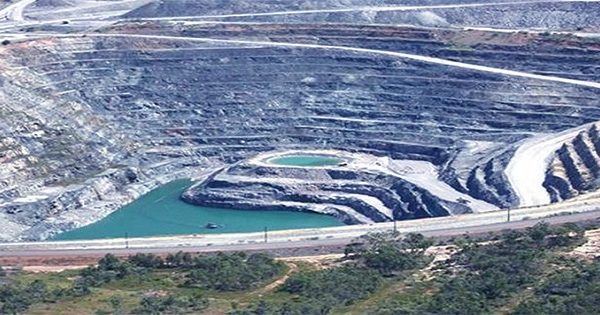According to new research, the ocean’s ability to retain heat and carbon is significantly influenced by deep underwater waves, some of which can reach a height of 500 meters.
An international team of researchers led by the Universities of Cambridge, Oxford, and California San Diego quantified the impact of these waves and other types of underwater turbulence in the Atlantic Ocean and discovered that the climate models used to guide government policy do not adequately account for their significance.
The ocean absorbs the majority of the heat and carbon produced by human activity, but the amount of heat and carbon it can hold depends on the turbulence of the ocean’s interior, which pushes heat and carbon deep into the water or pulls it toward the surface.
Although these submerged waves are well known, their significance in the movement of heat and carbon is not entirely understood.
The findings, which were published in the journal AGU Advances, demonstrate that ocean turbulence is more crucial than previously thought for the global movement of carbon and heat.
Warm waters from the tropics are carried by ocean circulation to the North Atlantic, where they cool, sink, and then travel back southward in the deep ocean like a massive conveyor belt.
The Atlantic branch of this circulation pattern, called the Atlantic Meridional Overturning Circulation (AMOC), plays a key role in regulating global heat and carbon budgets. Ocean circulation redistributes heat to the poles, melting ice there, and carbon to the deep ocean, where it can be kept there for a very long time.
“If you were to take a picture of the ocean interior, you would see a lot of complex dynamics at work,” said first author Dr. Laura Cimoli from Cambridge’s Department of Applied Mathematics and Theoretical Physics. “Beneath the surface of the water, there are jets, currents, and waves in the deep ocean, these waves can be up to 500 meters high, but they break just like a wave on a beach.”
Many climate models have an overly simplistic representation of the role of micro-scale turbulence, but we’ve shown it’s significant and should be treated with more care. For example, turbulence and its role in ocean circulation exerts a control over how much anthropogenic heat reaches the Antarctic Ice Sheet, and the timescale on which that happens.
Dr. Ali Mashayek
“The Atlantic Ocean is special in how it affects the global climate,” said co-author Dr. Ali Mashayek from Cambridge’s Department of Earth Sciences. “It has a strong pole-to-pole circulation from its upper reaches to the deep ocean. The water also moves faster at the surface than it does in the deep ocean.”
Researchers have been examining if the AMOC may be a contributing factor in the Arctic’s rapid ice loss while some Antarctic ice sheets are expanding over the past few decades. The fact that it takes several hundred years for heat absorbed by the North Atlantic to reach the Antarctic is one reason for this phenomena.
Today, researchers led by Cambridge University have shown that heat from the North Atlantic can reach the Antarctic far more quickly than previously believed. They did this by combining remote sensing, ship-based observations, and data from autonomous floats. In addition, the climate is significantly influenced by ocean turbulence, particularly strong underwater waves.
The ocean is divided into layers, with colder, denser water at the bottom and warmer, lighter water at the top, like a gigantic cake. Although heat and carbon are primarily transported within one layer of the ocean, they can also flow between layers of varying densities, bringing deep waters back to the top.
The scientists discovered that small-scale turbulence, a feature that is not completely accounted for in climate models, facilitates the transport of heat and carbon across layers.
According to theoretical predictions of oceanic internal waves, estimates of mixing from various observational platforms revealed evidence of small-scale turbulence in the upper branch of circulation.
The various calculations revealed that the class of density layers connected to the center of the deep waters traveling south from the North Atlantic to the Southern Ocean are most commonly impacted by turbulence. This indicates that there is a good likelihood that the heat and carbon carried by these water masses will be transferred across various densities.
“Climate models do account for turbulence, but mostly in how it affects ocean circulation,” said Cimoli. “But we’ve found that turbulence is vital in its own right, and plays a key role in how much carbon and heat gets absorbed by the ocean, and where it gets stored.”
“Many climate models have an overly simplistic representation of the role of micro-scale turbulence, but we’ve shown it’s significant and should be treated with more care,” said Mashayek. “For example, turbulence and its role in ocean circulation exerts a control over how much anthropogenic heat reaches the Antarctic Ice Sheet, and the timescale on which that happens.”
The study suggests that in order for scientists to produce more precise estimates of the future effects of climate change, there is an urgent need for the installation of turbulence sensors on global observational arrays and a more accurate representation of small-scale turbulence in climate models.
















